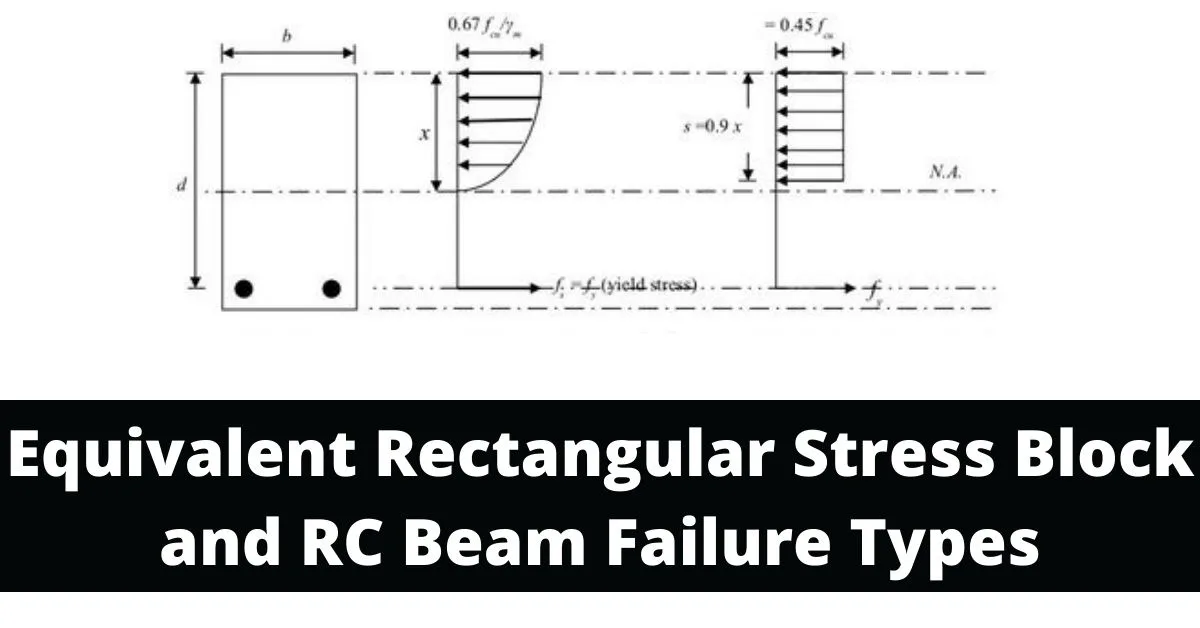Table of Contents
Equivalent Rectangular Stress Block
For ease of use and practicality, an equivalent rectangular stress block was adopted in BS8110. The average stress intensity is taken as 0.45 fcu and is assumed to act on the upper edge of the RC beam cross section with respect to the equivalent stress distribution block shown below. The area of the stress block is determined by its width (b) and depth (s).

The equivalent rectangular stress block doesn’t really span towards the section’s neutral axis but has a depth of s equal to 0.9x. As a result, the stress block’s centroid will be s/2, which is 0.45x from the top edge of the section. The area and centroid of the two stress blocks (rectangular parabolic and equivalent stress block) are nearly identical. As a result, the section’s moment of resistance will be equivalent in value when calculated using either type of stress block.
RC Beam Failure Types
RC beams loaded in flexure may fail in one of the three ways below, depending on the amount of steel provided in the section.
- Balance Reinforced Beam
The concrete crushes at the compression area, above the neutral axis, and the steel reinforcement yields at the same time to the ultimate load in this type of failure. Based on the equilibrium principle, the amount of steel reinforcement needed can be calculated by equalizing the compression force in the concrete and the tension force in the steel.
- Under Reinforced Beam
If there is less steel reinforcement than in the scenario of a balanced reinforced beam, the steel would then achieve its ultimate yielding stress well before the concrete starts to fail at the ultimate load. This type of failure occurs gradually and provides warning of impending failure. The depth of the neutral axis must be less than o.615d in this case. The BS8110 condition, which is used for the ultimate state design when the moment redistribution is less than 10%, is x 0.5d.
- Over Reinforced Beam
The concrete fails before the steel reaches yield stress if the amount of steel reinforcement provided is greater than that of a balanced reinforcement beam. This type of failure comes out of nowhere and has no warning period. The neutral axis is deeper than 0.615d in this case.












